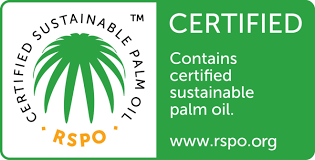The Use of Palm Oil
- Ali Stokes
- Nov 12, 2019
- 2 min read
If grown in a sustainable, environmentally friendly way, palm oil is not all bad news.
Look for the RSPO label to ensure you purchase products made with certified sustainable palm oil. This label gives you the confidence that the palm oil was produced in a socially and environmentally responsible way.

Can't find the RSPO label? Look for the Green Palm label! This label indicates products in support of the transition to certified palm oil. Proceeds from Green Palm Certificates help growers fund the transition to sustainable palm oil.
Palm Oil has its merits due to the lack of trans fats, it is easier to work with, it helps make products creamy and smooth and it can be a comparatively inexpensive source of vegetable oil.
However, it has attracted bad press due to de-forestation - the burning of forests that provide a natural environment to so many forms of wildlife to clear areas of land to plant new oil palms. As with many farming techniques there is a compromise. Certain techniques can be certified by organisations like RSPO to show that the product has been grown in a sustainable manner. Their logo will give consumers confidence when making purchasing decisions.
The consumer can also play a part by reviewing their needs of the product in the first place. Many large retailers will use the excuse of consumer led purchasing trends rather than looking at what they actually put on the shelves to dictate what we buy. A boycott of buying any products using palm oil is not necessarily the most sensible approach. If there are two products on the shelf and one product is certified by RSPO or Green Palm and that becomes the most purchased product then that will very quickly influence the decision of purchasing managers.
We pride ourselves on being an ethical company and will continue to work with our suppliers to only source palm oil from sustainably farmed sources.
There is palm oil in some of our bread products and margarine and we will continue to look for certified products or alternatives. We are somewhat at the mercy of the bigger companies that produce the products and we will continue to campaign for a more sustainable and environmentally friendly palm oil.
If you want to support this campaign then here are some other products that you may use at home that sometimes contain palm oil – lipstick, detergents, shampoo, soap, pizza dough, chocolate, instant noodles and ice cream.
EU law states that all labelling should identify if palm oil is in the product. Its derivatives can be called many things and below is a list of what to look out for.
INGREDIENTS:
Vegetable Oil, Vegetable Fat, Palm Kernel, Palm Kernel Oil, Palm Fruit Oil, Palmate, Palmitate, Palm olein, Glyceryl, Stearate, Stearic Acid, Elaeis Guineensis, Palmitic Acid, Palm Stearine, Palmitoyl Oxostearamide, Palmitoyl Tetrapeptide-3, Sodium Laureth Sulphate, Sodium Lauryl Sulphate, Sodium Kernelate, Sodium Palm Kernelate, Sodium Lauryl Lactylate/Sulphate, Hydrated Palm Glycerides, Ethyl Palmitate, Octyl Palmitate, Palmityl Alcohol
CONTAINS: Palm Oil




Comments